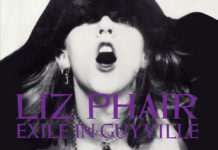There is a difference between an artist and artiste. An artiste is a performer. One who can showcase their abilities to a targeted audience. Putting the shoes on as an artiste while making your resume can dramatically enhance its value.
Often the idea for a masterpiece comes from within, the same goes for making an artist resume. Consider it a masterpiece and include the following essential elements in your resume to help you along the way.
Professional Experience
A compilation of your professional work goes in this section. A well-crafted artist resume contains a professional experience section that can illustrate your contributions & accomplishments to the recruiter. To do that, include the following tweaks in your professional experience section and see how it changes the outlook of your resume.
-
- Bucketing: Try to club 3-4 points under relevant sub-headings in the form of functions. For example, ‘Designing & Animation Development’, etc.
- Bolding: Incorporate the habit of bolding important figures and keywords throughout your resume.
- STAR Format: It stands for star-task-action-result. Using this format will help you bring forward your contribution/achievement in each bullet point.
- Power Verbs: Power/action verbs help you showcase the action you perform. For example, to build a better impact, you can replace “responsible for” with “overseeing”.
- Verbs Form: Make sure the verb form is correct with respect to the dates. Use the present participle of a verb for points in your current profile & projects and past form everywhere else.
Exhibition
Exhibition records are one of the most important aspects to an artist’s resume. Be it a solo/group exhibition, exhibition records are more important than your awards and other achievements.
Here’s how you can reflect them in a resume:
Solo Exhibition | The plight of the proletariat | Tom Cook Exhibition Gallery | Mar ‘14
Group Exhibition | To dream in capitalism | Theresa Maybelline Art Faculty | Oct ‘14
Summary
The time that goes into deciding the fate of a resume is about 7 seconds. Crafting your summary right can amazingly increase the chances of you getting shortlisted. In the summary section, you should list the factors on which you can provide value to an organization.
The following tips will help you construct an eye-catching summary:
- Write it in a paragraph form that is restricted to just 3-4 lines.
- Do not just list out your skills, mention how you can use those skills to help the organization.
- Include the number of years of experience you possess when starting the summary. For example, +5 years experienced Graphic Design Artist…
- Write an objective statement if you do not carry any working experience.
Education
Perhaps possessing the creative component is not the only thing that is essential for an artist. Artists have a dire regime of modules to go through that makes them perfect. Here’s how you can correctly display your education section in your resume:
- Write all your degrees in the reverse chronological order, i.e., the most recent degree on top then go backward.
- Do not write “Present”, or “Expected soon”, as the date of graduation. Just write the expected month, year of your graduation.
- Mention the location of your university at the end and do not use abbreviations for your university’s name.
For example:
Bachelor of Fine Arts | Berkeley University | Pasadena, CA | Mar ‘09 – Apr ‘13
Key Essentials
In the current climate, the intricacies of including valuable information in resumes are very important for artists:
- Include the grants and awards you have received in your educational and professional journey.
- A published review of your artwork can speed up your chances of getting shortlisted.
- Make a stunning portfolio or an Instagram account of your artwork.
- Mention all the residencies you have been on and scholarships, commissions, etc.
- List out all the workshops you have attended and organized.
- Mention your collaborative projects to bring forth your abilities to work in a team environment.
- Avoid including full-stops as points in a resume are not complete English sentences.






